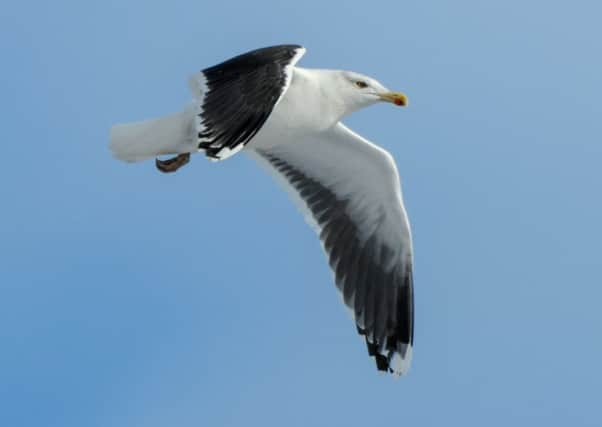Tag challenge to study turbine impact on Scottish seabirds


EDP Renewables has consent to develop three massive wind farms in the Moray Firth that collectively will generate enough power for 700,000 homes.
Each scheme will consist of up to 62 turbines, with a total capacity of 1,116 megawatts.
Advertisement
Hide AdAdvertisement
Hide AdKnown as Moray East, the developments will be sited 14 miles off the Caithness coast.
As part of planning regulations, the potential environmental impact of the wind farms must be understood. Current methods for monitoring wildlife are costly, prone to failure and often do not give an accurate picture of animals’ movements.
Now it is hoped more sophisticated gadgetry can be created that is more effective, efficient and reliable.
Greater black-backed gulls, which are found in the Moray Firth, will be the first species to test out the kit.
EDP Renewables has teamed up with the Offshore Renewable Energy (ORE) Catapult research and innovation centre to launch the technical challenge, which they say could lower the operating costs of a wind farm through better environmental monitoring.
Catarina Rei, technical lead on the project for EDP Renewables, said: “Environmental monitoring is already a big part of any wind farm planning and post-construction monitoring, onshore and offshore, but the reality is current monitoring techniques are expensive and not always representative of real-world conditions.
“Developing accurate technology is an essential step in improving what we do.
“We’ll be able to gain a greater insight into bird and coastal species behaviour, which will better inform the planning, consenting and operational stage of an offshore wind farm development.”
Advertisement
Hide AdAdvertisement
Hide AdVicky Coy, ORE Catapult project manager , added: “The greater black-backed gull is the ideal species to launch this innovation challenge with, as a colony is found in the Moray Firth area.
“The technology developed for the tagging should minimise any interference with the birds’ normal activities but, like the bird colonies it will track, will have to be extremely resilient to the harsh weather conditions found around the UK’s coastline.”
Conservationists have welcomed the prospect of gaining new insights into the activities of seabirds, which have been notoriously difficult to study due to practical limitations.
Alex Kinninmonth, head of marine policy at RSPB Scotland, said: “Exactly where seabirds go when they leave land has puzzled generations, but finding the answer has become increasingly important, with populations crashing and the potential for conflict with human activity at sea increasing.
“Technology is beginning to provide valuable insights but the development of small, low-cost, high-precision GPS tags will enable us to track the movements of a greater number of birds over longer time periods and in greater detail than current technology allows.
“This knowledge will greatly improve our ability to assess the risks on breeding seabirds from offshore wind farms, oil spills and other potentially harmful activities.”